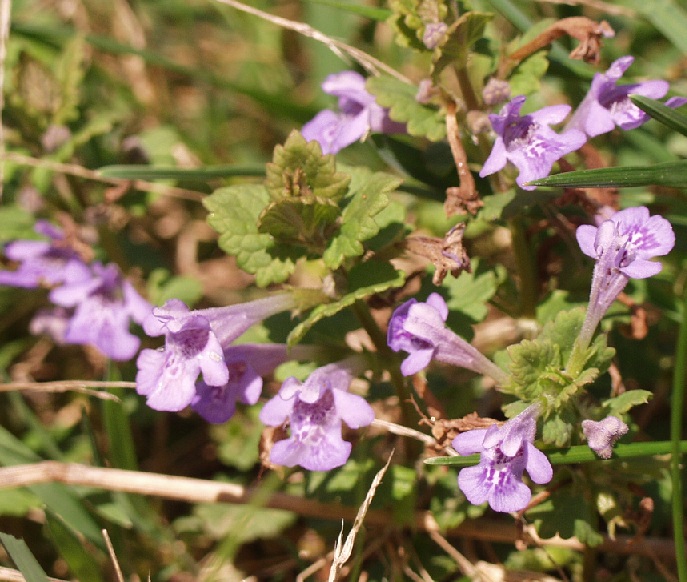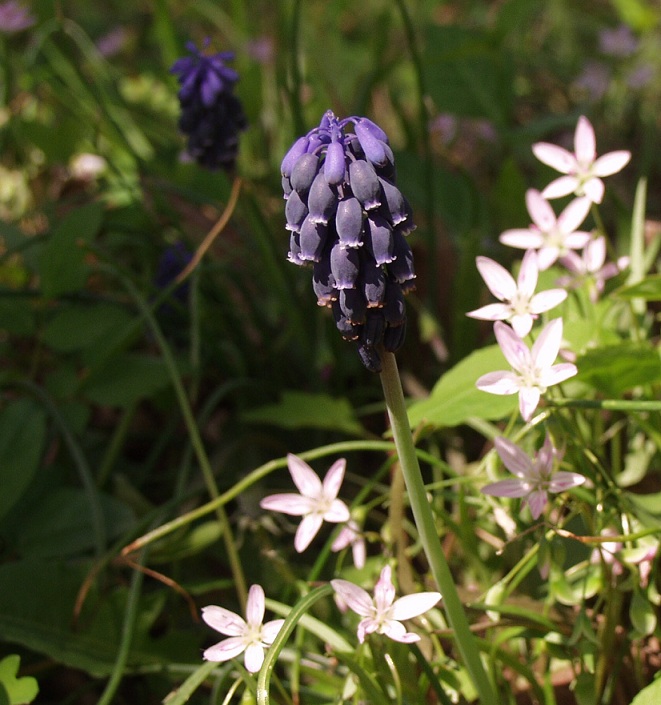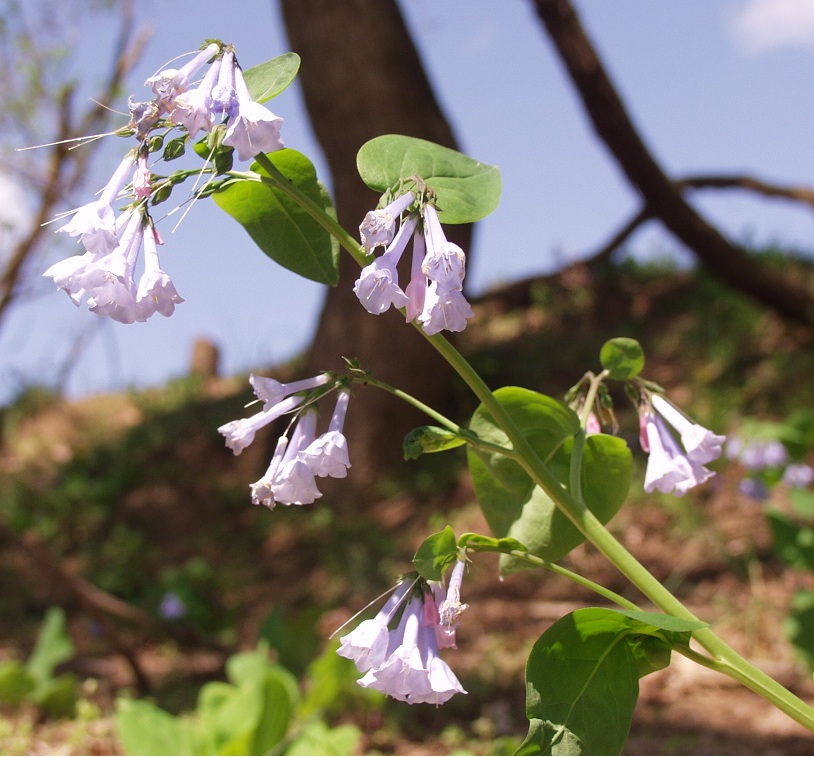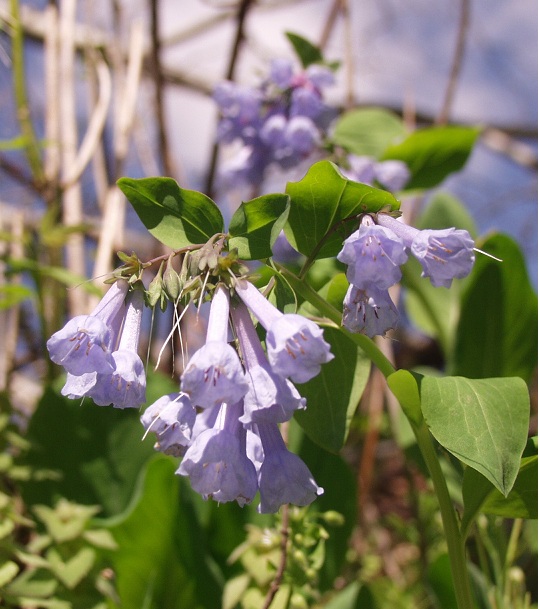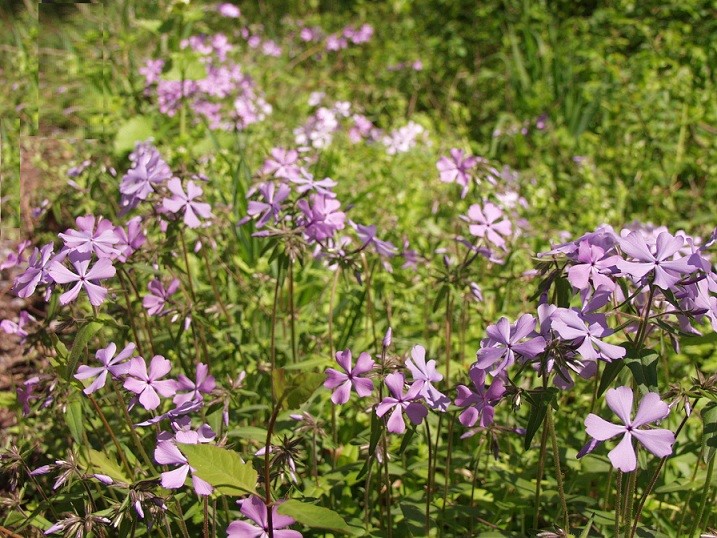There’s an extraordinary story playing out at Holy Cross Abbey in Clarke County, Virginia at this very moment and it doesn’t include budgets, politics or taxes. Instead, the story is the remarkable miracle called Spring and it is happening in the fields, woodlands and skies above the Abbey.

Bluebells along the Shenandoah River at Holy Cross Abbey in Clarke County, Virginia - Photo Edward Leonard
This is the perfect time to make a visit to the 1200-acre monastery just an hour west of Washington DC. Not only are the spring flowers in full bloom, but the peaceful darkness that descends here each night provides a perfect venue for gazing at God’s work overhead, especially in the spring.
Right now, Nature is dressed up in her finest purples and pinks at Holy Cross Abbey just in time for Easter. Even though other flower colors are now beginning to make their grand entrance for 2012, the dominant pastel pinks and blues of the Virginia bluebells are still splashed along riverbanks and in shady forest groves throughout the monastery. In the meadows, deep purple violets are everywhere. Tall pink-colored phlox are also just beginning to bloom.
But the natural beauty at the Abbey isn’t limited by gravity. The exceptionally warm Spring weather and clear March nights make an ideal combination for those willing to linger outside and tip back their heads to the skies. If you come to visit the monastery in the next few days, wander outside around 8:30pm and let your eyes adjust to the darkness for a moment.
Then look directly overhead toward the moon.
Words can’t do justice to what you will behold above, so you’ll just have to see for yourself.
Overhead you’ll see the waxing crescent moon hovering just above an inverted crescent necklace of planets and stars. First, off to the left of the Moon, is Sirius – the very bright dog star; next and a little higher to the right of Sirius is Betelgeuse (which also anchors the upper left corner of Orion, the hunter); then directly across from Betelgeuse (and framing the Moon) is Aldebaran; a little lower to the right of the Moon is Venus with Jupiter further to the right terminating the crescent.
Nightly sky maps can be found at http://www.skyviewcafe.com. Better yet, if you have a smartphone, download the free Google Sky app then simply point your phone to any section of the sky to instantly identify any star or planet. (The app even has a “red light” setting to reduce night vision loss from the normally bright cellphone screen.)
Shakespeare may have come the closest in using words to capture the beauty of a Spring night. Nearly 400 years after it was written, A Midsummer Night’s Dream and the night sky are just as captivating now as they were then;
Hippolyta: And then the moon, like to a silver bow
New bent in heaven, shall behold the night
Of our solemnities.
Spring is a fleeting dream, don’t miss it!

The skies above Holy Cross Abbey this week feature a waxing crescent moon and three planets aligned to makes a sight worth looking up for - map courtesy http://www.skyviewcafe.com (Click to enlarge)

